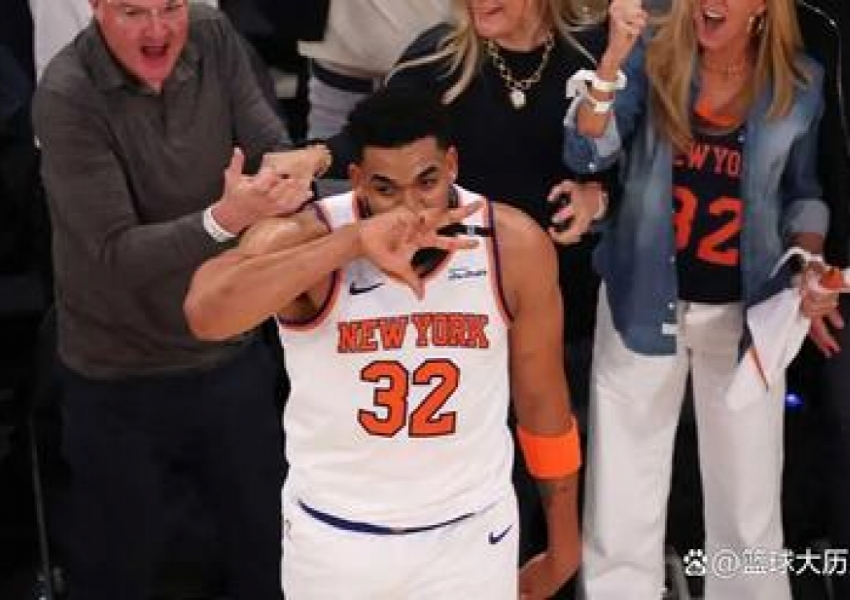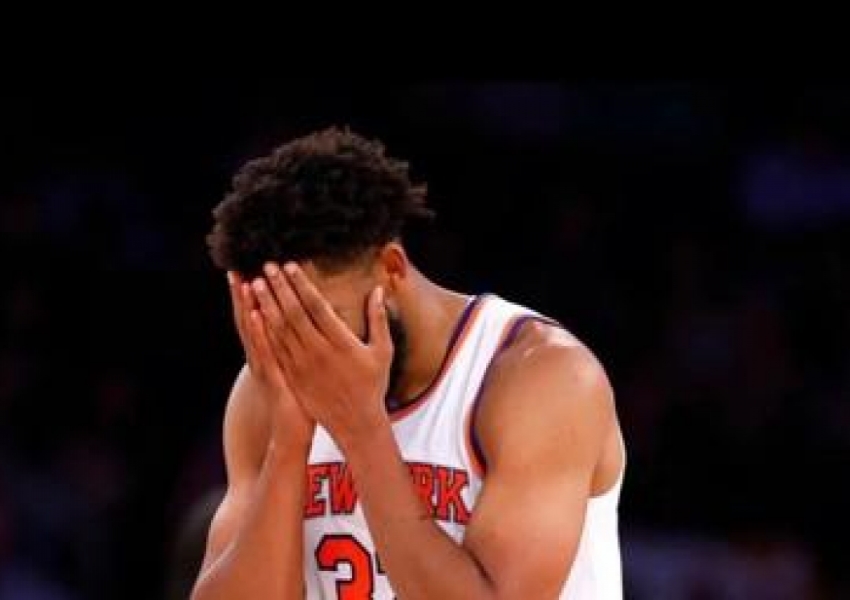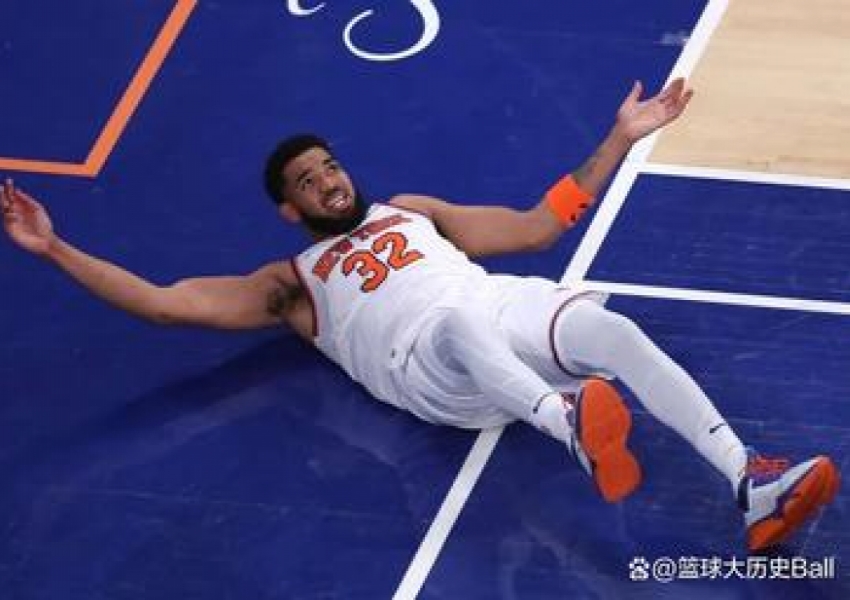Plus-Minus Disaster: What Went Wrong for Karl-Anthony Towns in Game 2?
In the high-stakes atmosphere of the Eastern Conference Finals, every possession, every defensive rotation, and every substitution is magnified. Game 2 between the New York Knicks and the Indiana Pacers was no different. Despite Jalen Brunson’s brilliance, the Knicks fell 114-109, and the spotlight quickly turned to the man who seemed to be the odd one out in a game dictated by nuance and execution: Karl-Anthony Towns.

On paper, Towns’ stat line doesn’t scream disaster—20 points, 7 rebounds, a perfect 6-of-6 from the free-throw line, 6-of-14 shooting from the field, and 2-of-5 from beyond the arc. But dig just a bit deeper, and the cracks begin to show. The most glaring number: a team-worst plus-minus of -20 in under 28 minutes of action. For context, the Knicks won the other 20 minutes Towns sat on the bench by a total of 20 points. That’s not just a red flag—that’s a siren.

To understand where things unraveled for KAT, you have to break down the game into its most pivotal stretches. The first came early. The Knicks opened sluggishly, falling behind 19-9. Towns was on the floor. The moment he was subbed out for Isaiah Hartenstein, the Knicks went on a furious 17-5 run to close the first quarter up 26-24. That early momentum swing told the story: the Knicks were better with Towns off the floor.

In that opening quarter, Towns went 0-for-2 from the field, didn’t register a single assist, steal, or block, and finished with a -10 plus-minus in just a few minutes. His defensive awareness was spotty at best, repeatedly out of position on pick-and-rolls and late on rotations. Pascal Siakam feasted during that stretch, scoring 11 quick points and getting whatever he wanted.
But perhaps the most damaging minutes came in the fourth quarter. With the game still within reach and the Knicks clinging to a slim lead built over two quarters, Tom Thibodeau rolled out a curious lineup: Payne, McBride, Bridges, Towns, and Hartenstein. That’s a big lineup with limited mobility and shot creation, and the Pacers exploited it mercilessly.
Carlisle’s game plan was simple and surgical—attack Towns on every switch, put him in space, drag him into the perimeter where he’s least comfortable, and then collapse the defense when he gets caught flat-footed. The Pacers opened the fourth quarter on a 12-3 run, turning a tight game into a 9-point lead and forcing Thibodeau’s hand. Towns was yanked after just three minutes.
From there, he wouldn't return until there were 2:25 remaining in the game. That’s just five minutes of fourth-quarter play for the Knicks’ supposed second star, a max-contract, All-NBA third team selection. In Thibodeau’s world—where trust is everything and his starters usually get run into the ground—benching Towns in crunch time is damning.
When Towns did return, it wasn’t much better. Down nearly double digits, the Knicks began clawing back, thanks to Brunson’s one-man heroics. A five-point burst and a slick assist from the Knicks’ floor general cut the Pacers’ lead to one with under a minute to go. But the execution down the stretch—particularly on the glass—was brutal.
On three key possessions after Towns returned, the Knicks surrendered two offensive rebounds. Fortunately, neither turned into points. But the missed box-outs and lack of physicality were telling. And then came the dagger: with the game on the line and Brunson hoisting a potential game-tying three, Towns didn’t even crash the offensive glass. He stood idly, watching. That final moment encapsulated the lack of urgency and physical presence that defined his night.
Let’s be clear—using a single game’s plus-minus to crucify a player isn’t always fair. Game 1 was proof of that: Towns exploded for 35 points and 12 rebounds with a +9 in a hard-fought loss. But in Game 2, his flaws—particularly on the defensive end—were on full display, and Indiana exposed him with ruthless efficiency.
Tracking data tells more of the story. In the first two games of the series, Towns contested 41 field goal attempts. On those contests, Indiana’s shooting percentage jumped from 49.0% to a blistering 56.1%. That includes significant boosts in both midrange and three-point accuracy. On direct matchups, Myles Turner shot 5-of-7 when defended by Towns over 47 possessions. Tyrese Haliburton, when matched up with KAT for 18 possessions, went 6-of-13 for 15 points and added 6 assists with zero turnovers. That’s a surgical dissection of a mismatch.
The numbers suggest it’s not just about effort—it’s about scheme vulnerability. Towns’ defensive limitations in space have always been a concern. Against a team as methodical and spacing-oriented as Indiana, those weaknesses are magnified. Carlisle knows it. Haliburton knows it. Even Siakam, who’s made a career out of shredding slower-footed bigs, knows it.
And it wasn’t just the eye test or analytics—Towns’ own teammates outperformed him in hustle metrics and impact. Isaiah Hartenstein, the Knicks' backup center, played 29 minutes and posted 6 points, 9 rebounds, and 3 blocks on 2-of-3 shooting. His plus-minus? A team-high +6. McBride, who has turned into an X-factor in this postseason run, also finished with a +6.
So where do the Knicks go from here?
Thibodeau faces a classic coaching dilemma. Stick with your star in hopes he bounces back at home in Game 3, or make the tough call and reduce his minutes if he continues to be a defensive liability? In this chess match between Carlisle and Thibodeau, the Pacers’ head coach has checkmated the Knicks’ rotation twice in a row. If New York wants to change the momentum of the series, the adjustments have to start with Towns—his defense, his engagement, and his commitment to winning the gritty possessions.
What’s perhaps most frustrating about Towns’ Game 2 performance is that the Knicks didn’t need him to dominate offensively—they needed him to hold his own defensively and make winning plays. Instead, they got a talented scorer who vanished in the moments that mattered most.
It’s not the first time Towns has faced this criticism, and if the Knicks fall into a 3-0 hole, it certainly won’t be the last.
Commentary:
Karl-Anthony Towns is a paradox. He’s too skilled to be written off and too flawed to be fully trusted in the biggest moments. Watching him in Game 2 felt like watching a sports car stuck in second gear—capable of brilliance, but perpetually held back by its own design. The numbers say -20, but the story says so much more. In a playoff series that demands mental toughness, defensive accountability, and situational awareness, Towns was swimming against the current.
Game 3 at Madison Square Garden will be a defining moment—not just for the Knicks, but for Towns himself. If he wants to silence the critics, rewrite the narrative, and prove that he can be more than a stats guy, the opportunity is there. But if Game 2 repeats itself, the whispers about his postseason ceiling will grow into a chorus. And in New York, that chorus never sings softly.
Copyright Statement:
Author: focusnba
Source: FocusNBA
The copyright of this article belongs to the author. Reproduction is not allowed without permission.
Recommended Blog
- 16 Points, 5 Turnovers: Where Exactly Did Anthony Edwards Fall Short Against SGA?
- Amen Thompson Season Review: From Defensive Specialist to Houston’s Two-Way Beacon of Hope
- The King of Boards: Just How Good Has Josh Hart Been This Postseason?
- Rare Rotation Brings Redemption: How Thibodeau's Nine-Man Strategy Powered the Knicks to a Critical Game 3 Win
- One More Year? At Nearly 39, What Does Al Horford Really Have Left in the Tank?
- Six-for-One: Did the 2022 Celtics-Pacers Trade Turn Out to Be a True Win-Win?
- NBA Script? Mavericks Win No. 1 Pick With 1.8% Odds—Coincidence or League Conspiracy?
- Non-Contact Nightmare: Tatum’s Achilles Scare Could Mark the Beginning of the End for the Celtics’ Core
- Win-Win Trade! Just How Valuable Has Alex Caruso Become in the Playoffs?
- What’s Going On With Nikola Jokic? Three Rare Subpar Games Raise Big Questions